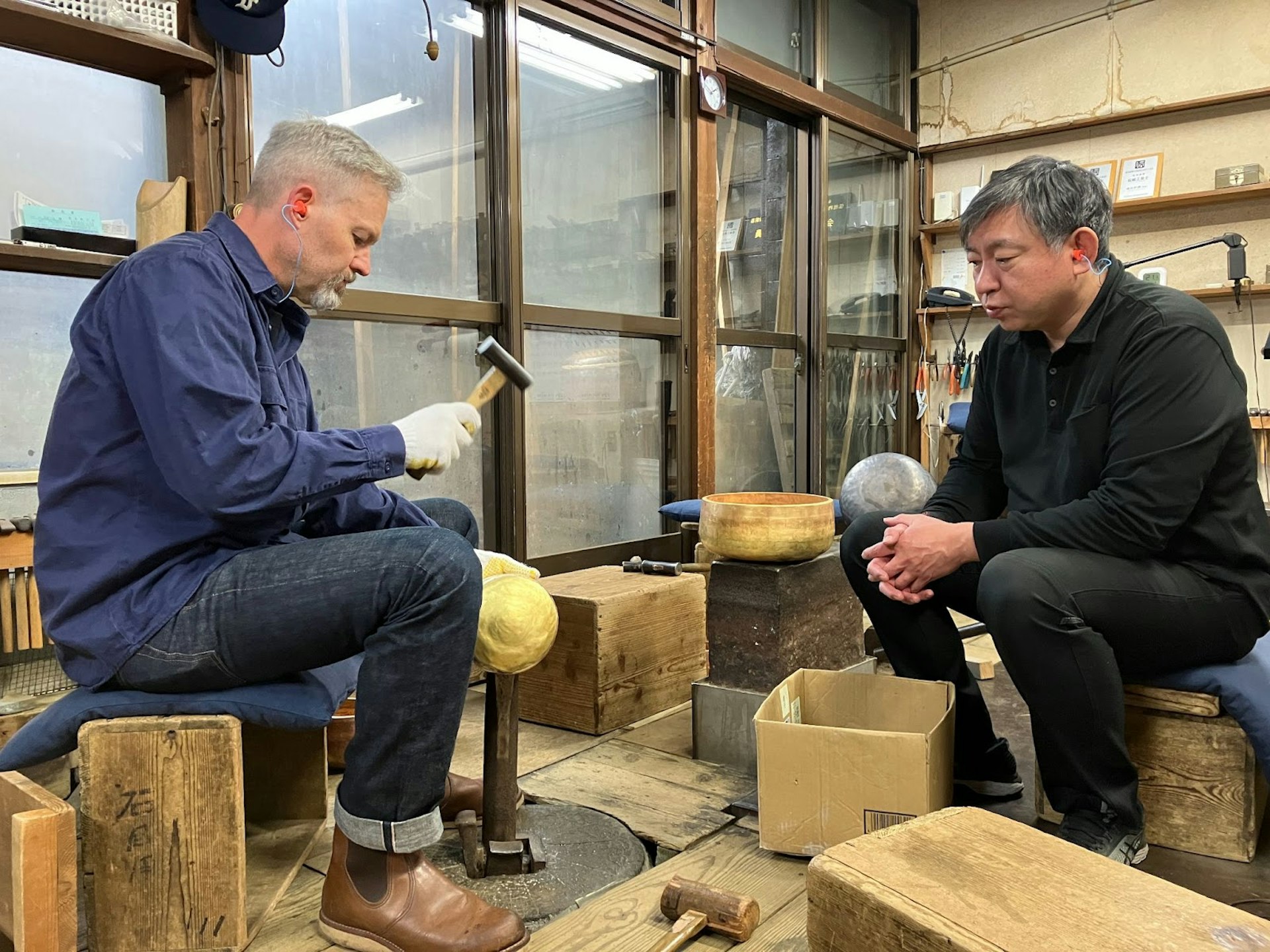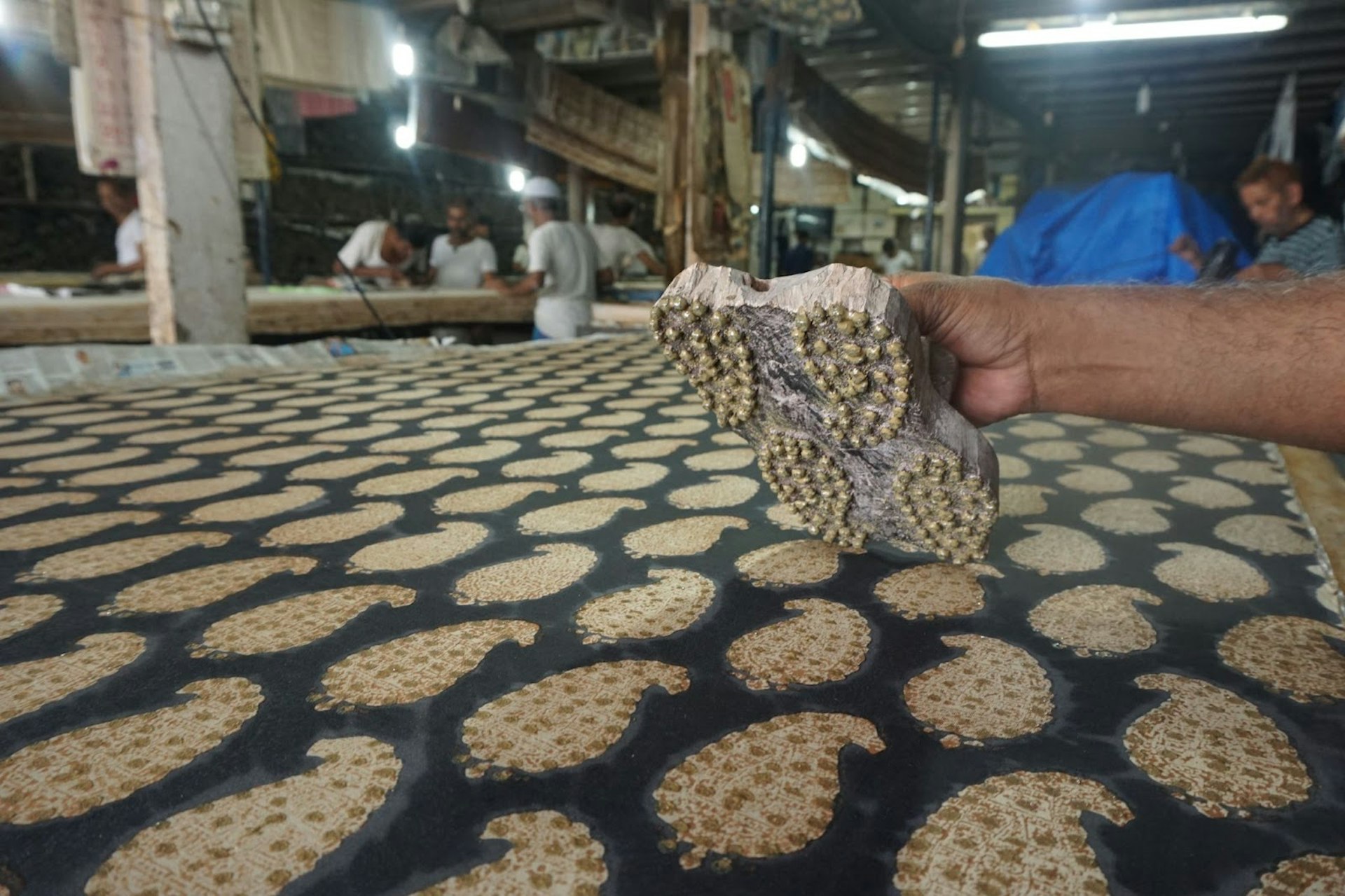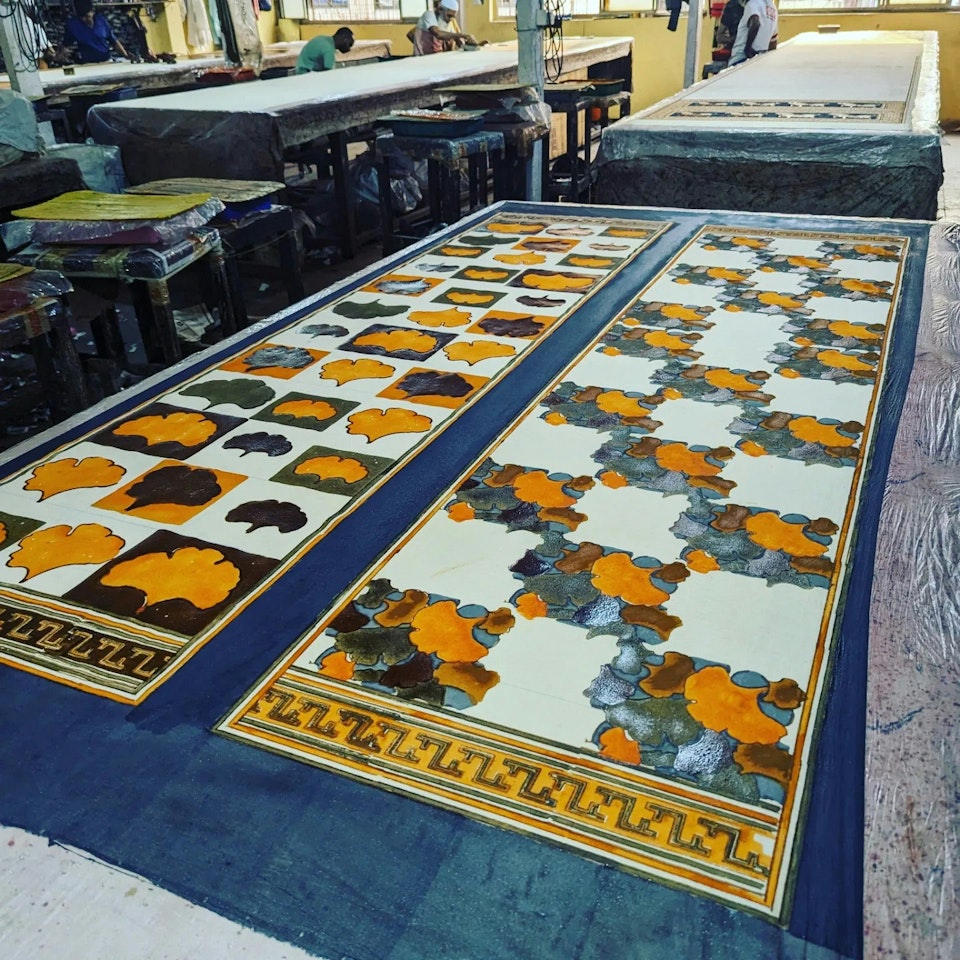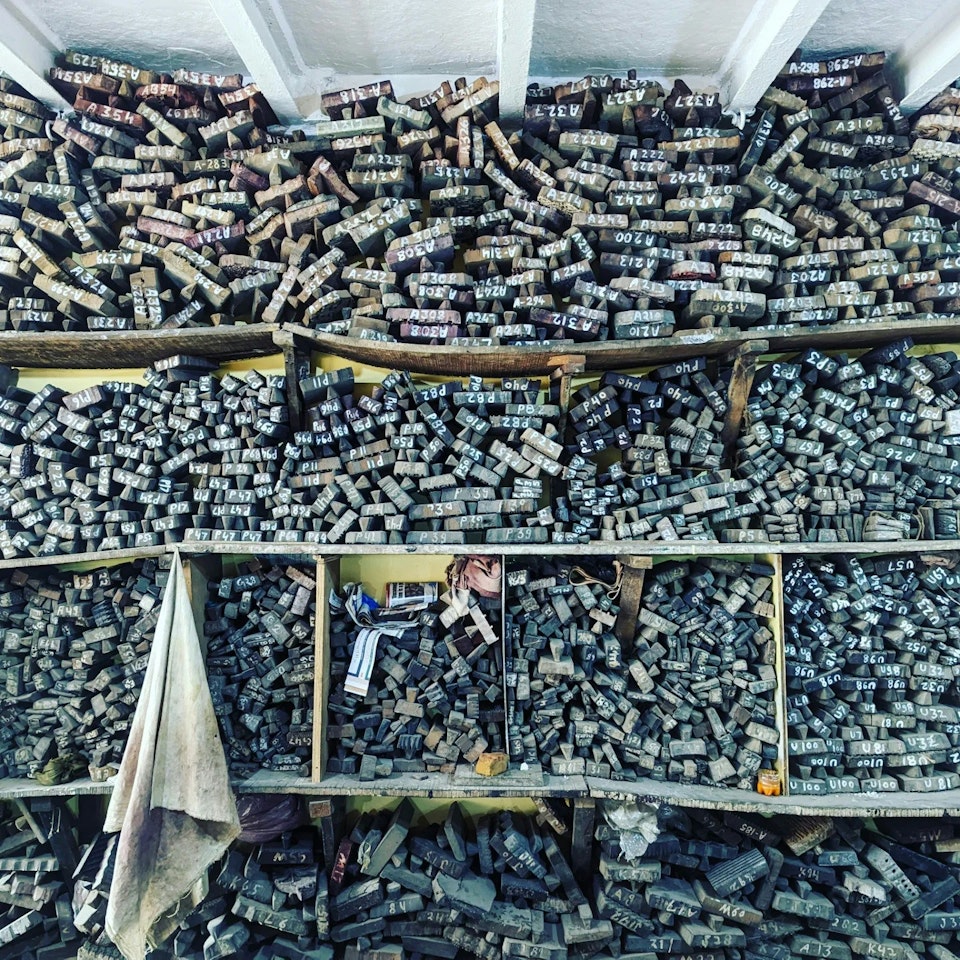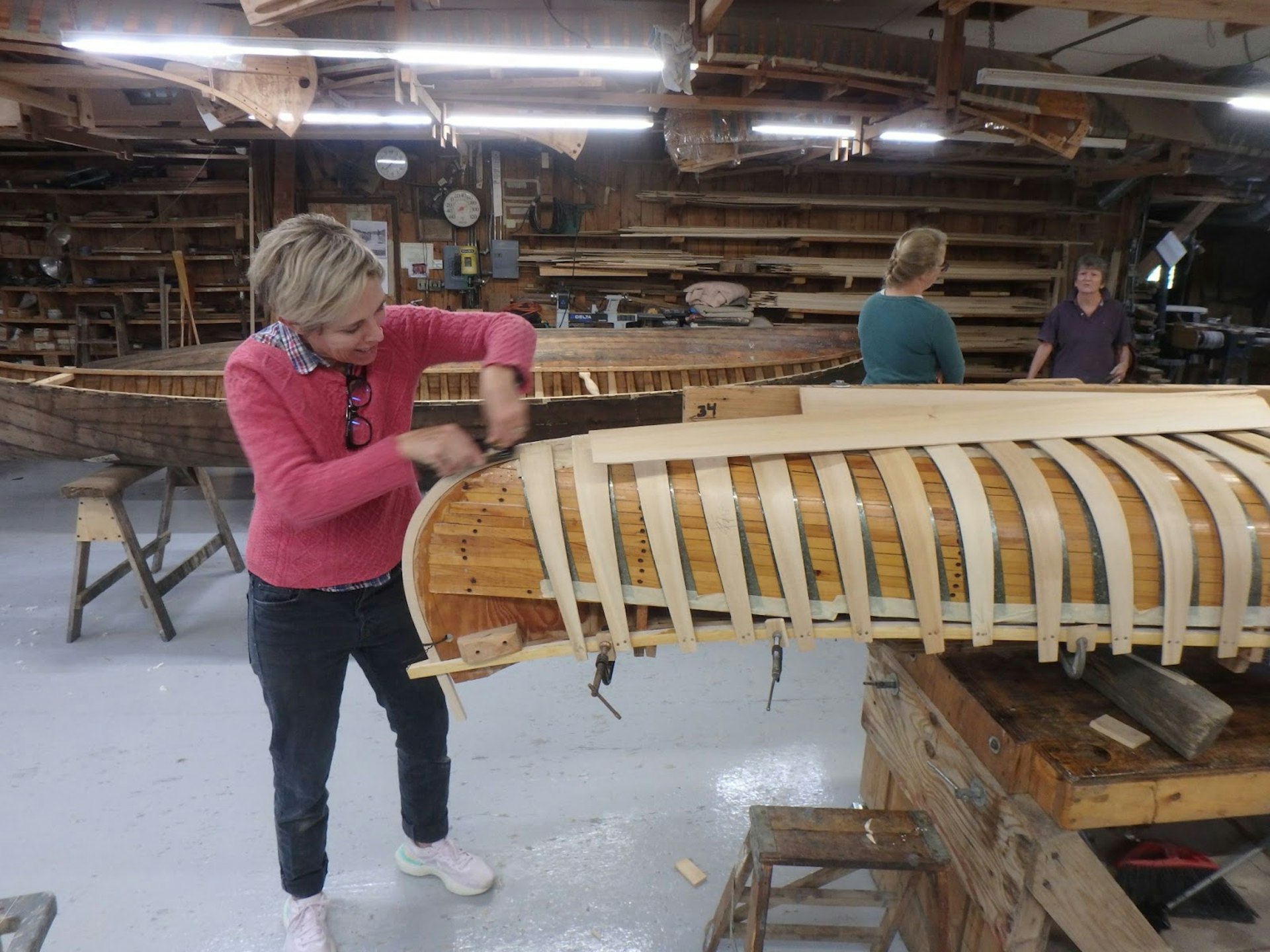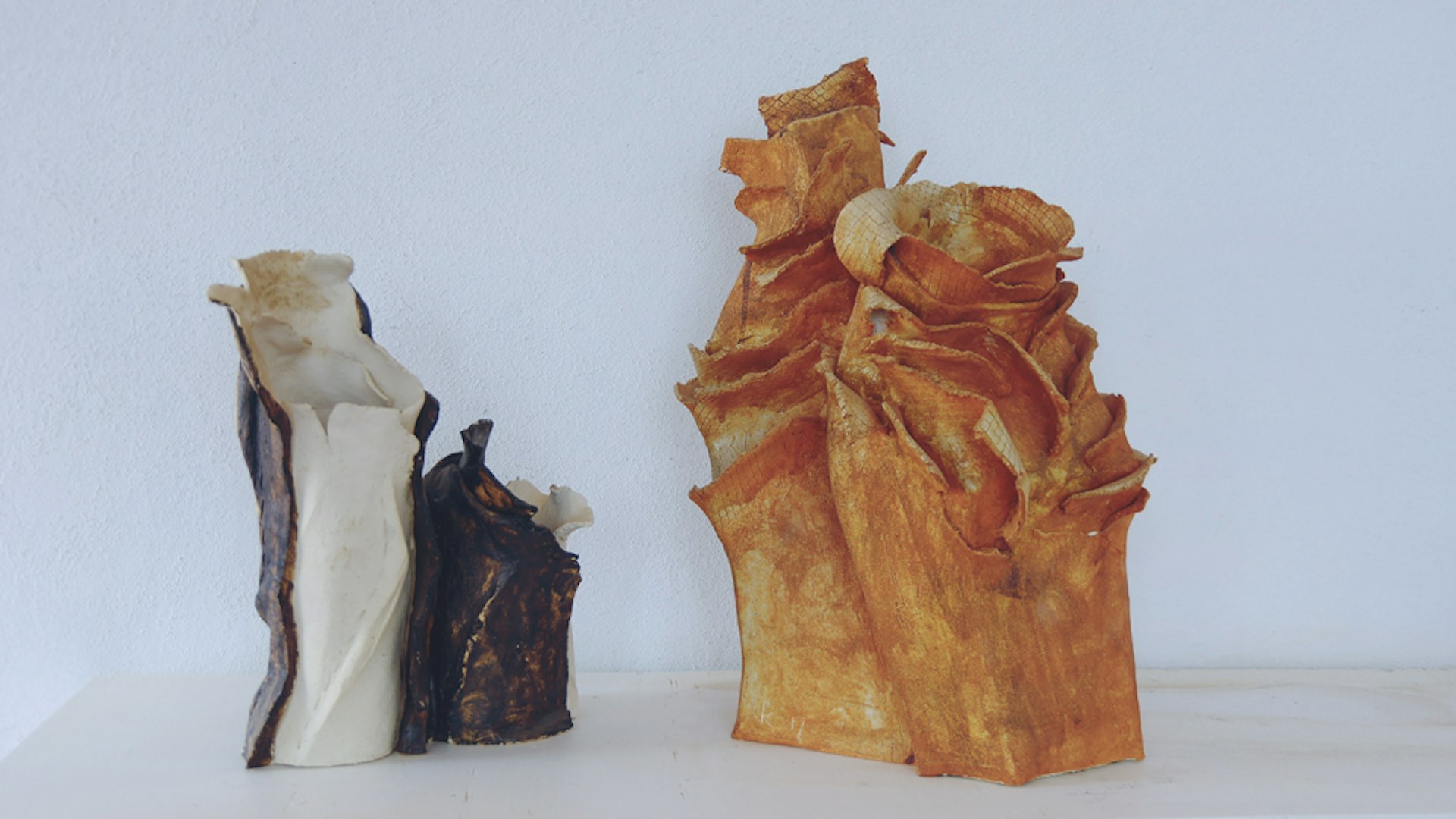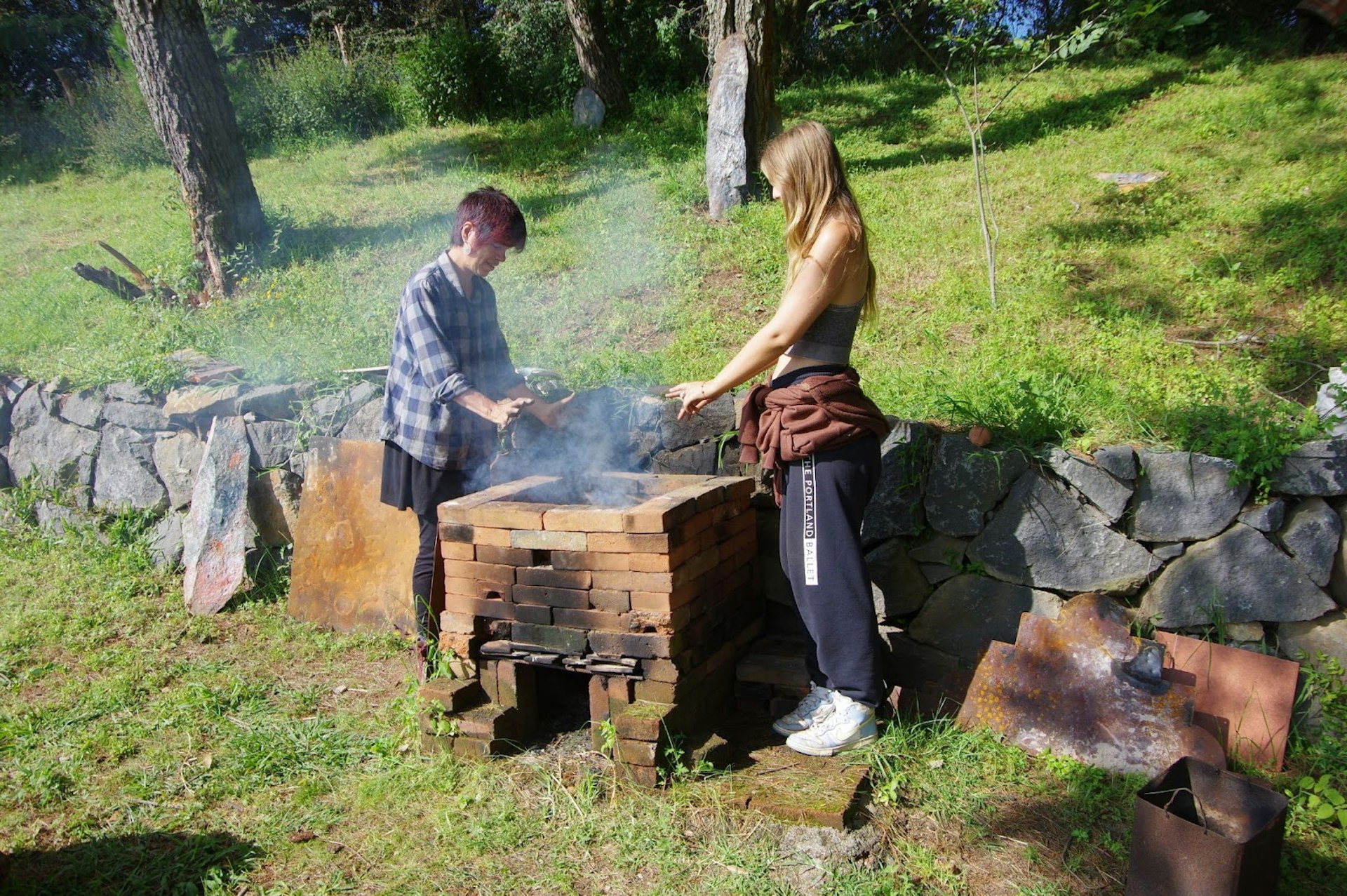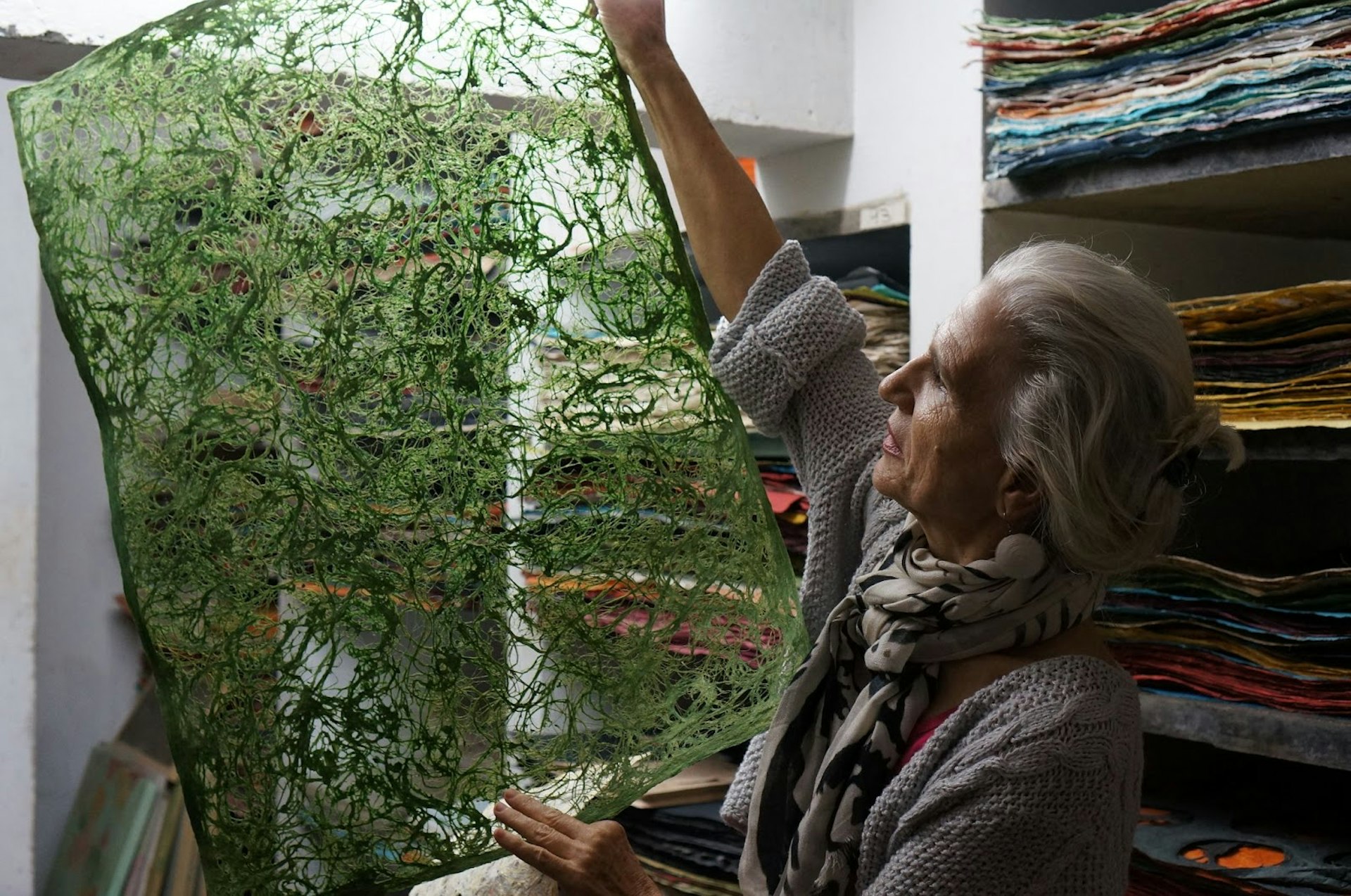March 11, 2024
5 Ancient or Endangered Craft Traditions to Keep Alive
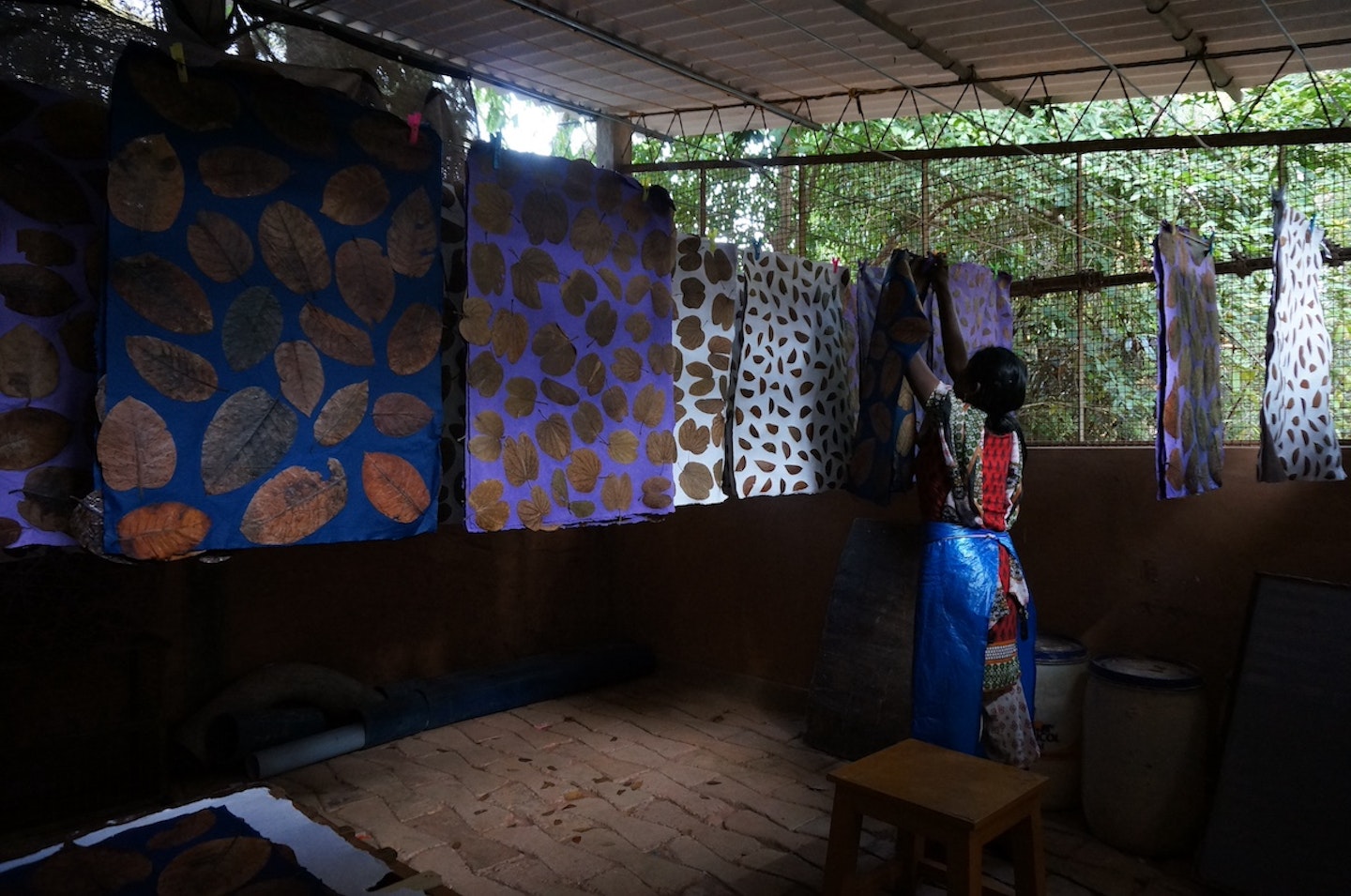
In the ongoing search for master craft masters who are willing to open their studios and share their wisdom with VAWAA apprentices, we sometimes find portals into an ancient world. It’s these ancient or endangered craft traditions that are often unique to certain regions of the world, tied to cultural practices, or use specific materials that are found locally.
While some crafts enjoy a resurgence every decade or so due to their accessibility—take for example crocheting or knitting—some are slowly (or quickly) fading from the world. As specialized craft masters leave us, they take their knowledge and practice with them. Part of our mission is to keep their ancient wisdom alive by offering mini-apprenticeships to pass down the stories of their endangered art forms.
The artist-apprentice dynamic is vital to keep endangered craft traditions from going completely extinct. There’s so much history, culture, life, and hands-on knowledge that simply can’t be learned from reading or even watching something. These secrets have to be shared in person, with someone willing to open their mind, be a beginner, and immerse themselves fully into a craft tradition. Here are 5 craft legends (and VAWAA artists) who are still working today, passing on their lifelong learnings to future generations.
Traditional Brass Bell Crafting with Yoshinori
In Takaoka, Japan, a city known for its history of metal production and craftsmanship, VAWAA artist Yoshinori creates Buddhist rin bells. Also known as ‘standing bells,’ these ancient relics have been used for meditation for thousands of years. Yoshinori’s particular practice is 400 years old. He’s a 4th generation master and one of ten remaining craftsmen in all of Japan. What was once passed down the family line is now being shared with travelers all over the world.
Learning how to make one of these bells means learning how to move and shape metal with simple tools. In creating a resonant bell toll, you can usher the mind into that peaceful presence required for deep meditation.
“The passion and justified pride that Yoshinori holds for his craft, the traditions passed on through hundreds of years of history, amidst the patience of his teaching style was exemplary,” reflected VAWAA apprentice Terry when he traveled to Takaoka with his family in tow. “Yoshinori’s art is a true family affair—and this was as well for us, with three generations in his workshop.”
VAWAA apprentice Michael at work in Yoshinori's Takaoka studio
It’s not only incredibly fulfilling for those curious travelers who make it out to Takaoka, but it’s a rewarding experience for the craftsmen at work in the studio. Another VAWAA apprentice, Ronald, felt so welcomed, the enthusiastic exchange of knowledge making the learning process so much easier. “The craftsmen are happy to help you improve your bell and skill, in part because they know so few people are willing to learn to make a bell by traditional methods,” he wrote.
Sadly, these endangered crafts are often the ones most overlooked. Despite the recent boom of sound baths and sound therapy, the hard work it takes to create that powerful deep toll is often disregarded, along with its history. Being an apprentice in the company of craft experts means discovering kinship on top of all the fascinating historical and cultural revelations.
While apprentices may not become dedicated masters of the craft, the wisdom Yoshinori values deeply will be passed on in the studio. He’s most inspired by the ancient Japanese tea ceremony, ‘sado,’ endeavoring to approach his work with the same beauty and elegance. Understanding what personally makes a craft master tick can enhance our understanding of the craft tenfold; we leave carrying its lessons in our daily lives.
Ajrakh Block Printing with Sarfraz
Ajrakh block printing is thought to have origins over 4000 years old. Likely stemming from the word “Azurakh,” which means blue in Arabic and Persian, Ajrakh is concerned with the seemingly mystical happenings and movements of the sky. In this form of block printing, colors represent different phases of light. Black is night and red is twilight, while lighter shades create patterns inspired by stars and sunlight.
Detail of the hand-printing process
It’s an incredibly beautiful tradition, the results of which would be impossible to achieve by mass production. Though few know how to practice this craft, the textiles are incredibly popular on the market. As a result, craftmasters are often overwhelmed, and unable to meet demands if their hard work is not valued and paid for accordingly.
Thankfully, VAWAA artist Sarfraz is shepherding this ancient craft into a somewhat contemporary transition. His process follows 13 steps, rather than the traditional 16. So while it’s still a slow art form, it’s something he’s able to share with traveling apprentices.
“The Ajrakh process is time-consuming and complex,” shared VAWAA apprentice Steven. “However, Sarfraz (and his team) walked me through each step of the process which resulted in a couple of art pieces that I am very pleased with It was interesting to learn how Sarfraz has taken this traditional art form and transformed it into something still very alluring today, thereby ensuring the continuance of the art form into the future.”
A work in progress (left), Sarfraz's printing blocks (right).
Sarfraz is a sixth-generation block printing artist, with a lineage of pure Ajrakh craftsmanship, so any adjustments or reinterpretations to the craft are faithful to its tradition. This crafting history surrounds Sarfraz and runs in his blood. Every day, he selects his patterns from the 800 teak blocks his grandfather created. He also works to revive lost traditional techniques, such as using vegetable dyes, allowing for a more sustainable practice that works in harmony with the earth.
There’s a harmony throughout Ajrakh craftsmanship that would be tragic to lose—from the slow earth-conscious creation of a piece to its celestially-inspired roots.
Hand-building Canoes with Rollin
Wooden canoes were once used by cultures the world over. It was an important tool for travel and trade. The 19th century wood-and-canvas canoes which kindle nostalgic images were themselves based on indigenous canoe building. Today, it’s mostly relegated to sport or leisure. What was once a commonplace craft has become a novelty—one more often supplied by plastic and metal fleets.
Master craftsman and VAWAA artist Rollin discovered the advantages of traveling by a wood-and-canvas canoe in the mid-60s when he spent time on the Allagash River and other Northwoods waterways. It wasn’t long after he started his foray into the world of wooden canoe building that he realized the resources for learning this craft were seriously lacking. Inspired to document knowledge for future generations, he co-authored a detailed explanation of how to build a wood-and-canvas canoe. Now, he’s one of the foremost experts in the wooden canoe world.
Learning the ins and outs of an ancient craft deeply enough to guide newcomers is a special kind of mastery. Rollin’s enthusiasm for the ancient craft of wooden canoe building has made learning a crucial practical skill possible again. VAWAA apprentice Kristin had no prior experience building her own boat, and yet Rollin had her notching and planing spruce, plus planking white cedar like an old pro within hours of entering his shop.
VAWAA apprentice Kirsty with her (nearly finished) canoe
Why build a boat this way? Wood is far more durable than polyethylene and other alternative materials—and much easier to repair. Many canoeists rave about how well a wooden vessel will carve its way through water, maintaining its balance in choppier waters. And you only need to look at how beautiful a wooden canoe is to start dreaming of your next river adventure.
The revival of this ancient craft also directly contributes to a greater awareness of the surrounding environment. In Atkinson, Maine, where Rollin’s workshop is located, water becomes a new highway for exploration. When his apprentices finish building a canoe, there are plenty of lakes and rivers to paddle through, plus waterfalls to marvel at. Handbuilding canoes invite a return to the land.
Experimental Ceramics with Carmen
The world of ceramics is not an endangered one, thankfully it’s very much alive and well all over the world. Naturally, we’re mesmerized by hands deftly guiding clay, stopping the wheel just in time and finishing off with a pristine glaze—it immediately has people itching to learn. Pottery studios are becoming commonplace and demand for pottery apprenticeships runs high.
However, the ancient, primitive approach to ceramics is often overlooked—and losing attention. In some ways, the raw creativity of its initial beginnings has fallen by the wayside.
You only need to look at a couple of Carmen’s ceramics to have your mind opened to a world of clay possibilities. A long-time innovator of ancient, indigenous Mexican ceramic techniques, she uses local clay, red earth, and a simple kiln. The results are dramatic and—thanks to the primitive charcoal and wood burning methods used—distinctly elemental.
Examples of Carmen’s sculptural ceramics work
Carmen’s spontaneous spirit is evident in her finished pieces and the way she works. It’s a no-rules approach to ceramics that can feel incredibly liberating. Her single fire kiln is used for non-traditional materials, including various plants, feathers, pieces of glass… whatever speaks to her on her walks around the rural village of Umecuaro.
When we consider ancient or endangered crafts, we may expect that they must require apprentices who are disciplined in their respect for tradition, and ready to diligently learn meticulous step-by-step processes. However, this is not always the case—especially in the primitive ceramics technique. Sometimes keeping alive endangered traditions means reconnecting with the inner child. When we give that playful human spirit room to forage and burn things, we find that we are not so distant from those early pioneers.
A young apprentice learning how to use the kiln with Carmen
“The natural progression of our work over 5 days was enough to keep us all excited and engaged,” shared VAWAA guest Dasom after his time with Carmen. As technically brilliant as this award-winning ceramics master is, it’s her imaginative spirit inspiring others that is keeping this ancient tradition alive.
Paper Making with Luisa
Paper is that everyday item we regard as a basic necessity, something we don’t consider to be the result of an endangered craft. New research by the Heritage Crafts Association, an organization based out of the U.K. that identifies traditional craft skills on the verge of extinction, has recently added handmade papermaking to its critically endangered list. While its official endangered status varies regionally, one thing is for sure: this ancient wisdom needs to be preserved.
Thankfully, VAWAA artist Luisa in Auroville, India has long been continuing on the extensive Indian traditions and craft of hand paper-making, passing on her generational knowledge to travelers of the world.
Using all-natural resources and commonly found items such as vegetable fibers, flowers, leaves, grass, and seeds, Luisa creates sustainable, handcrafted paper. Rather than cutting down trees, she credits nature as her co-creator, working with its ‘imperfections’ and unique elements. The results are gorgeous and durable artworks, which create not only stationary but also jewelry and sculpture.
In certain parts of the world, this is an endangered craft, but one that could enjoy a huge revival. While there are guides to making paper available, the range and experimentation Luisa has under her belt should not be underestimated. The opportunity to learn directly from her is incredibly empowering, as she is not only informed by a (very) long crafting history—she’s also dedicated her life to continuing its story.
Luisa holding up one of her creations
So much creative expression begins with a piece of paper. It’s an important foundation. A place to map ideas and brainstorm, to write the keywords of a story, to sketch out an idea. It feels wrong to deny ourselves that tactile blank canvas in favor of screens. Craftmasters like Luisa teach us practical skills to imagine and create a new way forward, thanks to their respect for the knowledge and wisdom of the past. By keeping these ancient and endangered crafts alive, we’re able to carve out pathways to alternative futures.
Written by Kat Odina Ali
Explore all mini-apprenticeships, and be sure to come say hey on Instagram. For more stories, tips, and new artist updates, subscribe here.
